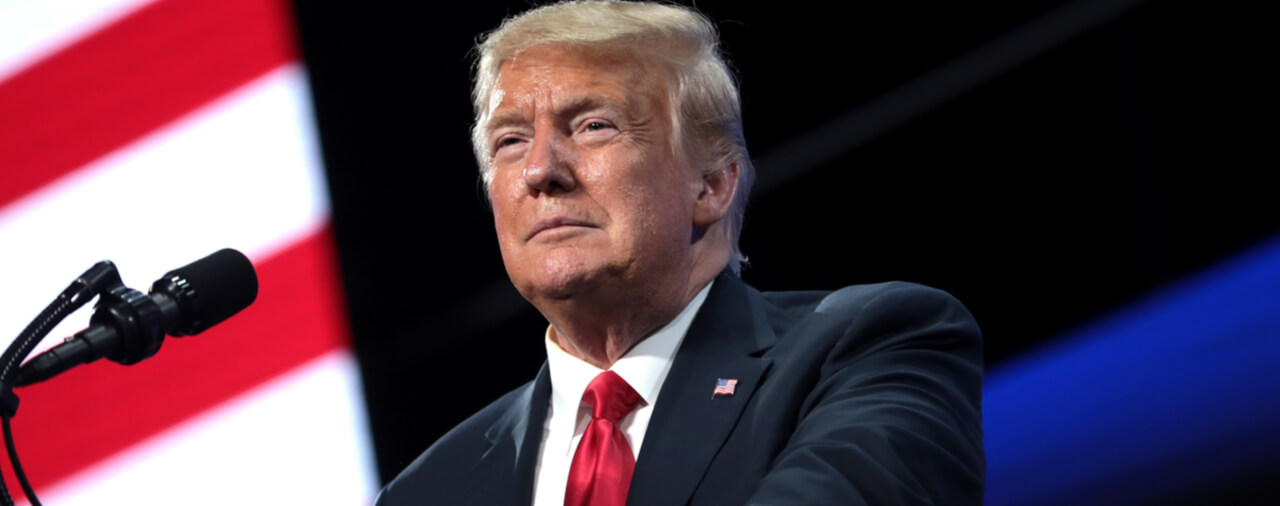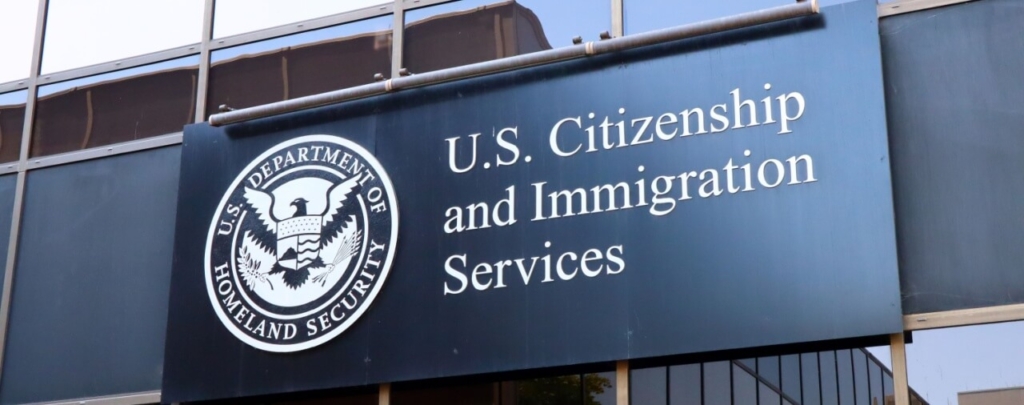Introduction
In this article, I assess the most contested provisions of President Trump’s Executive Order, titled “Protecting the Nation from Foreign Terrorist Entry into the United States” (82 FR 8977 (Jan. 27, 2017)) [PDF version] as a matter of legal soundness and policy. Before reading this article, please see my blog on the controversial provisions of the EO [see blog] as well as our website’s detailed analysis of section 212(f) of the Immigration and Nationality Act (INA). Please note that there is fast-moving litigation in the federal courts regarding the EO, and a nationwide temporary restraining order was issued against parts of it by the United States District Court for the Western District of Washington [PDF version]. In this post, we will focus on the language of the EO and how it has been implemented as of February 5, 2017. Please continue following our website for further analysis of the EO and other immigration news, as well as developments regarding the implementation of the EO and related court decisions.
My Analysis of the Legality and Wisdom of the Executive Order
Having reviewed the most controversial provisions of the EO [see blog], I will now offer my opinion of the legality of these provisions and whether, if legal, they constitute good policy. I will do so in light of the language and enforcement of the EO and not the litigation that is in progress. Please see the Immigration Blog to find blog posts about developing news regarding the litigation contesting the EO.
As Applied to Permanent Residents
The EO initially suspended entry for LPRs from seven countries that have already been designated under section 217(a)(12) for restrictions of their nationals using the VWP. To the effect that it suspended the entry of LPRs, it is my opinion that the EO was both unlawful and constituted bad policy. LPRs returning to the United States are generally not treated the same as those seeking admission into the United States as nonimmigrants or in any other non-permanent status or configuration. Under most circumstances, returning LPRs are not considered to be seeking admission into the United States [see article]. Furthermore, under longstanding precedent, LPRs are under most circumstances not considered to be making a new “entry” into the United States upon return. Because section 212(f) pertains to the President’s power to suspend “entry,” it is highly suspect to interpret the provision as allowing the President to deny entry to an LPR who is not considered to be seeking “admission” (under current law) or a new “entry” (under the pre-1996 law). Multiple federal district courts issued injunctions against the application of the EO to LPRs, and they were correct to do so. Fortunately, the White House reversed its original interpretation of the EO and has decided that it never applied to LPRs [see blog]. Please see the applicable section of our full article on section 212(f) to learn about the statutes and case law that underpin my argument on this point [see section].
As a matter of policy, applying the EO to LPRs was indefensible even if there were no legal questions. LPRs have already gone through an extensive application process and have been afforded the privilege of residing permanently in the United States. As Charles C.W. Cooke of the National Review notes — himself an LPR — “these are people who have been granted permanent residency; people who have made their lives here on the understanding that to fail to do so will incur penalties.”1 Indeed, the failure to reside in the United States may lead to abandonment of LPR status [see article], with limited exceptions for certain workers from Canada and Mexico [see article]. Cooke added, “As a permanent resident myself, I don’t expect to be handed a passport or treated like a citizen… But I do expect to be treated differently than a guy who got off a plane for the first time…”
If an LPR is suspected of being deportable, there are many provisions in section 237 of the INA to initiate proceedings against the LPR. However, one of the virtues of LPR status is that it provides more process protections against being denied entry into the United States, removed, or stripped of status than do the various nonimmigrant statuses.
As Applied to Non-Permanent Residents
With regard to suspending entry for non-LPRs from the seven specified countries, it is my opinion that the President is well within his authority. Section 212(f) gives the President sweeping authority to issue a proclamation finding that the entry of any aliens, or of a class of aliens, is detrimental to the interests of the United States. Although courts have hitherto not found any restrictions on the President’s section 212(f) authority, it is likely that certain exercises of it could trigger scrutiny from the courts. To learn more about this issue, please see the relevant portion of our section 212(f) article [see section].
For this EO, the President suspended immigration from seven countries that have already been designated under section 217(a)(12) for restrictions of their nationals using the VWP. Rather than immediately suspend immigration to other countries that may also be compromised by terrorism, the President instructed relevant agencies to conduct a full review along with formulating and implementing new vetting procedures. The reasoning for implementing limited restrictions immediately was to lessen the strain on the relevant agencies while conducting said review.
There has been an interesting debate regarding the question of whether the President has the authority to suspend entry by all citizens of designated countries under section 212(f). David J. Brier of the Cato Institute argued that the Immigration and Nationality Act of 1965’s prohibition on discrimination against immigrants on the basis of national origin bars suspending entry for persons from an entire country based on section 212(f).2 Section 212(f) was promulgated in 1952. However, I agree with Andrew C. McCarthy’s assertion in the National Review that absent Congress’ repealing or amending section 212(f), the provisions should be read in harmony, where plausible.3 In banning national origin discrimination for the purpose of immigrant visas, Congress did not see fit to abrogate section 212(f), or at the very least limit its scope. As McCarthy noted, “Congress is presumed to not repeal statutes by implication; there must be a clear expression of legislative intent.” Because there are interesting questions on this issue, I look forward to posting another blog on it in the future as the issue is litigated.
In the case of this EO, the President limited its scope to countries already designated as countries of concern by the Congress and by then-Secretary of State John Kerry last year. The President held off on designating further countries until a full review is completed. It is important to remember that aliens abroad, even those with nonimmigrant visas, do not have a right to enter the United States. The wisdom of the order aside, the President was within his authority to issue it, and I hope to see the courts uphold his authority to have done so. By the same token, the President was well within his authority to suspend the entry of Syrian refugees for the foreseeable future.
Please see the final section of this article [see conclusion] for my analysis on the wisdom of the EO.
Suspending the Refugee Program
I find the EO’s suspension of the U.S. Refugee Admissions Program (USRAP) for 120 days to be reasonable, as I do the reduced cap of 50,000 for FY-2017. The President is exercising his authority judiciously to conduct a thorough review of the refugee program, provided the number of refugees that we have been accepting from regions of the world with high anti-American sentiment.
Furthermore, certain statements from the Obama Administration begged question about the effectiveness of current vetting practices. For example, in September of 2016, Senator Ted Cruz of Texas was unable to procure a definitive answer from the Director of the United States Citizenship and Immigration Services (USCIS), about the extent to which testimony of an applicant for refugee status must be corroborated by concrete evidence.4 In previous blogs, I have noted specific problems regarding the vetting of Syrian refugee applicants given the security situation there [see blog].
Favoring Specific Religious Minorities Facing Religious Persecution in Refugee Admissions
The final particularly controversial point of the EO was the President’s provision that applicants for refugee status based on religious persecution who are religious minorities in their home countries should be given preference in refugee applications.
In a blog that I published on November 29, 2015, I rejected the notion, as espoused by then President Barack Obama, that religion was not relevant to refugee considerations [see blog]. Under section 101(a)(42) of the INA, religious persecution is, in fact, one of the five categories under which an individual can seek refugee status. The United States has given preference to religious minorities before in similar contexts (see e.g., “Lautenberg Amendment” PL 101-167).
On March 18, 2016, then-Secretary of State John Kerry asserted that the Islamic State (ISIS) was perpetrating genocide against Christians, Yazidis, and other religious minority groups in Iraq and Syria.5 There was little question, even by the previous administration, that religious minorities were in grave danger in regions of the Middle East and North Africa where ISIS is active. Interesingly, however, on November 1, 2016, it was reported that of the 13,210 Syrian refugees taken into the United States since the beginning of 2016, 12,966 were Sunni while only 24 were Shi’a Muslim, 110 were non-Sunni/Shi’a Muslims, 77 were Christian, and 24 were Yazidi.6 Whatever the reason, it seems peculiar that two groups that the Secretary of State found were the victims of genocide in Syria, and who make up roughly 10% of Syria’s population, comprised approximately 0.7% of the refugee admissions.7 Beyond Christians and Yazidis, it seems odd that Shi’a Muslims, who make up 13% of Syria’s population, had so few refugees as well considering the amount of territory commanded by ISIS.
Although the resettlement figures do not bear it out, Knox Thames, the State Department’s special adviser for religious minorities, stated in 2015 under the Obama Administration that “[d]ue to the unique needs of vulnerable religious minorities communities, the State Department has prioritized the resettlement of Syrian Christian refugees and other religious minorities fleeing the conflict.”8 It was certainly not unconstitutional for an official of the Obama Administration to state — plainly — that they would give priority to refugee claims made by religious minorities in Syria. It is no less unconstitutional for the Trump Administration to do so. Furthermore, as constructed, giving preference to religious minorities would potentially give preference to non-Sunni Muslims in Syria, and to Muslim applicants for refugee status in places in the world where Muslims, or Islamic sects, are both the minority religion and face religious persecution.
In response to the EO, Chaldean Catholic Archbishop Bashar Warda of Erbil expressed support for the EO’s preference to religious minorities (while also expressing reservations with other aspects of the EO):
There were no protests when Syrian Christians were only let in at a rate that was 20 times less than the percentage of their population in Syria. I do not understand why some Americans are now upset that many minority communities that faced a horrible genocide will finally get a degree of priority in some manner. 9
Conclusion
For reasons I have discussed in previous blogs, I support the idea behind the EO. It is indisputable, as I previously noted, that majority populations of many countries in the Middle East — including the seven designated in the EO — support ideas that, when implanted, represent a danger to the United States. The Daily Caller reported that from March 2014 to June 2016, at least 20 alleged terrorists entered the United States from the seven countries specified in the EO.10 There are also dangers presented separate from being an actual member of a terrorist organization, but rather support , for example, execution or severe corporal punishment for apostasy, homosexuality, or adultery [see blog]. While I strongly oppose bans based on religion or religious affiliation, I support President Trump’s call for recognizing the danger of totalitarian and radical Islamist ideas in the Middle East and adjusting our vetting procedures accordingly. Furthermore, I have previously expressed support for suspending the Syrian refugee program due to the impossibility of properly vetting applicants, and I stand by that position now [see blog]. The first priority of our immigration system must be to ensure the safety and security of the American people.
However, the Trump Administration made a hash out of implementing and enforcing the EO, and that is categorically inexcusable. There is ample evidence that the President and his staff rushed to issue the EO without consulting adequately with the officials who would be responsible with implementing and enforcing it. Furthermore, there is evidence that the Trump Administration overrode the Department of Homeland Security’s initial opinion that the EO should not apply to LPRs. The continuing failure to provide comprehensive guidance for dual nationals of an affected country and an unaffected country has also been a significant oversight. President Trump’s stated reasons for issuing the EO without warning to those affected or to the agencies involved is — to say the least — lacking. The refusal of the President and his inner-circle to acknowledge any error makes it hard to offer the benefit of the doubt.
Even if the EO had been perfectly drafted and implemented, it would have been highly controversial. The White House did itself and the nation a disservice by implementing it precipitously if not recklessly and by not being prepared to offer a coherent defense of its otherwise reasonable provisions. While the DHS and the Department of Justice (DOJ) have worked hard to interpret, implement, and defend the EO on the fly, certain officials in the President’s circle seem more concerned with making a political point than in helping to ensure the safety of the American people.
As a final point, the implementation of the EO will create problems for both the Administration and for people who, like me, support stronger vetting of applicants from dangerous regions of the world. First, the lackluster implementation and defense of the EO will make it difficult for President Trump to institute further reforms to strengthen our immigration system after the expiration of his temporary suspensions, regardless of whether this EO is ultimately upheld in court. Secondly, as Andrew McCarthy points out on the National Review Online, “[b]ad implementation begs victims with legitimate grievances and heightened judicial scrutiny — the kind of bad facts that tend to make bad law. And bad law makes it much harder to develop good policy. It can become a cycle of self-defeat.”11
The Trump Administration has made many errors in implementing the EO and accordingly has eroded its already shaky public trust. It is incumbent on the Administration to salvage immigration reform from the resulting mess, to defend the EO’s lawful provisions effectively so as to preempt the creation of bad judicial precedents, and to learn from its mistakes for future actions in the immigration and in other contexts.
- Cooke, Charles C.W., “Trump’s Executive Order Covers Green Cards — That Makes No Sense,” nationalreview.com/corner, (Jan. 28, 2017)
- Bier, David J., “Trump’s Immigration Ban Is Illegal,” nytimes.com, (Jan. 27, 2017)
- McCarthy, Andrew C., “Responding to Patterico on Trump’s Executive Order on Immigration,” nationalreview.com/corner, (Feb. 1, 2017)
- Barkoukis, Leah, “Cruz Grills DHS Official Into Admitting Some Refugees Are Allowed Into US Based on Their Testimony Alone,” townhall.com, (Sep. 29, 2016)
- Labott, Elise and Tal Kopan, “John Kerry: ISIS responsible for genocide,” cnn.com, (Mar. 18, 2016)
- Goodenough, Patrick, “13,210 Syrian Refugees So Far in 2016; Up 675% from 2015; 99.1% Are Muslims,” cnsnews.com, (Nov. 1, 2016)
- Wikipedia, “Syria,” https://en.wikipedia.org/wiki/Syria#Religion, (retrieved Feb. 2, 2015)
- Shea, Nina, “The State Department Turns Its Back on Syrian Christians and Other Non-Muslim Refugees,” nationalreview.com, (Nov. 2, 2016)
- Morissey, Ed, “Iraq archbishop: Where were all those protesters while ISIS committed genocides?” hotair.com, (Feb. 2, 2017)
- Prestigiacomo, Amanda, “Report: 20 Alleged Terrorists From Countries Listed on Trump Order Entered US Since 2014,” dailywire.com, (Jan. 31, 2017)
- McCarthy, Andrew C., “Trump’s Order on Entry into the U.S.: Implementation Problems,” nationalreview.com, (Jan. 30, 2017)





